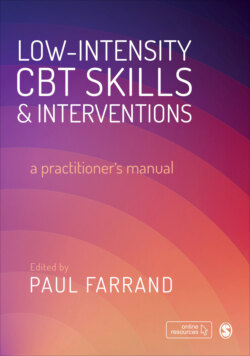Читать книгу Low-intensity CBT Skills and Interventions - Группа авторов - Страница 30
На сайте Литреса книга снята с продажи.
Single-Strand v. Multi-Strand Interventions
ОглавлениеLICBT represents a single-strand approach (Turpin et al., 2010) whereby following assessment a clinical decision is reached (Chapters 3 and 4) to adopt a specific CBT self-help intervention from the LICBT toolkit (Part II). The practitioner then supports the patient to engage with the single-strand intervention. This contrasts with HICBT where evidence-based protocols specify the delivery of several different interventions as part of a multi-strand approach. For example, in the treatment of generalised anxiety disorder (GAD), a treatment protocol (Dugas and Robichaud, 2007) informing NICE (2011a) guidelines specifies adopting cognitive restructuring to identify and challenge worry beliefs, problem-solving and exposure to uncertainty. The movement towards an even more elaborated multi-strand approach is now gaining momentum given further developments in third wave HICBT (Hayes and Hoffmann, 2017).
